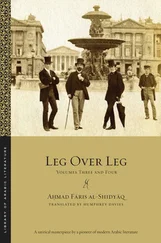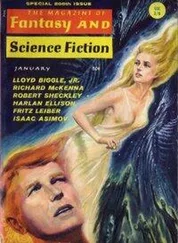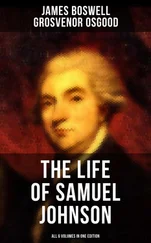326i.e., Pope Sergius III (r. 904–11).
327Marozia (ca. 890–936): a Roman noblewoman who, with her mother Theodora, was actively involved in the affairs of the papacy, as described in what follows. The accession to the papacy of her bastard son, grandson, two great grandsons, and a nephew has led hostile commentators to refer to the period of her ascendancy as a “pornocracy” (rule by prostitutes).
328According to most accounts, it was Pope John X rather than Sergius III who awarded Marozia, rather than her mother Theodora, the unprecedented title of senatrix (“senatoress”) of Rome.
329Later, Pope John XI (r. 931–35).
330“Hugh, King of Arles”: i.e., Hugh of Arles (before 885–948), who was elected King of Italy.
331Pope John X (914–28) was a protégé of Theodora (see n. 327) and perished as a result of the intrigues of her daughter Marozia.
332i.e., Leo VI (reigned for seven months in 928).
333i.e., Stephen VII (r. 928 (?) to 931), hand-picked by Marozia as a stopgap until her son could assume the papacy as John XI.
334“her husband”: Alberic I, Duke of Spoleto; it is not usually reported that she poisoned him.
335i.e., the aforementioned Hugh of Arles, King of Italy.
336i.e., Alberic II (912–54), who had his mother imprisoned until her death.
337Stephen VIII: reigned 939–42.
338“disfigured his face”: perhaps a reference to the claim that Stephen VIII was the first pope to shave and that he ordered the men of Rome to do likewise.
339John XII reigned from 955 to 964, dying at the age of twenty-seven.
340i.e., Otto I (912–73), who in 962 made a pact with Pope John XII that made the Western Roman Empire guarantor of the independence of the Papal States. Soon, however, the pope, fearful of the power thus bestowed, began to intrigue with the Magyars and the Byzantines against the Western Empire. Otto returned to Rome in 963, convened a synod of bishops, and deposed the pope.
341Leo VIII was an antipope from 963 to 964, when he was illegally elected by the 963 synod that illegally deposed John XII, and a true pope from 964 to 965, having been legally re-elected following the death of John XII.
342Crescentius: i.e., Crescentius II (d. 992), son of Crescentius I and not, as the author states, of John X and Marozia, was a leader of the Roman aristocracy who made himself de facto ruler of Rome, was deposed by Otto III, rose again in rebellion, appointed an antipope (John XVI), and was eventually defeated and executed.
343Benedict: Pope Benedict VII (d. 983); other sources do not confirm that he died in prison; the author appears to have confused him with John XIV (see below).
344John XIV: pope from 983 to 984, who was imprisoned by the antipope Boniface VII in Sant’Angelo, where he died.
345Boniface VII: ruled as antipope (974, 984–85) under the patronage of Crescentius and the Roman aristocracy.
346Gregory: i.e., Pope Gregory V (ca. 972–99), cousin and chaplain of Otto III; although he consistently supported the emperor, his death was not without suspicion of foul play.
347Otto III (980–1002): son of Otto II, in 996 he came to Rome to aid Pope John XV (985–96) (see below) against Crescentius, whom he eventually killed.
348“played a trick on him”: Otto III promised Crescentius the right to live in retirement in Rome but reneged and had him murdered and hung from the walls of Sant’Angelo.
349Pope John XV (r. 985–86) succeeded Pope Boniface VII; according to other accounts he died of fever, while it was the antipope John XVI, appointed by Crescentius, who, on the latter’s defeat, had his eyes put out and nose cut off before banishing him to a monastery.
350Benedict VIII: reigned 1012 to 1024.
351John XIX: succeeded his brother Benedict VIII and reigned from 1024 to 1032.
352Benedict IX: said by most sources to have been between eighteen and twenty years of age when he succeeded his uncle, John XIX, he is the only pope to have reigned three times (1032–44, 1045, 1047–48) and to have sold the papacy (to Gregory VI in 1045), although he later attempted to reclaim it.
353Meaning presumably Sylvester III and the restored Benedict IX.
354“with his concubine” ( maʿa surriyyatihi ): thus the Arabic, although one wonders if maʿa sariyyatihi (“with his detachment of soldiers”) is not what is meant.
355“one of the kings of France”: i.e., Robert II (972–1032), who was excommunicated by Pope Gregory V when he insisted on marrying his cousin, a marriage denied by the pope on grounds of consanguinity.
356Gregory VII: reigned from 1073 to 1085. His attempts to strengthen papal hegemony against the Holy Roman Empire culminated in the Investiture Controversy (over the right to appoint bishops), which led, in 1076, to his excommunication of Emperor Henry IV, who was accused of being behind his brief abduction.
357Henry IV (r. 1056–1106) had declared Pope Gregory VII deposed at the synod of Worms, held a week before his own excommunication.
358“Countess Matilda”: Matilda of Tuscany (1055–1115), a leading noblewoman and heiress, who supported Pope Gregory VII during the Investiture Controversy.
359Canossa: Matilda’s ancestral castle.
360Urbanus II (r. 1088–99) in fact succeeded the short-reigning Victor III rather than Gregory VII directly.
361“the two sons of Henry IV”: i.e, Conrad (1074–1101) and his brother Henry (1086–1125), later Emperor Henry V (r. 1106–1125); Conrad joined the papal camp against his father in 1093; Henry was crowned King of Germany by his father to replace Conrad but soon revolted against his father, whom ultimately he deposed.
362Henry VI (r. 1190–1197) was in fact the son of Emperor Frederick I, while Frederick II was his son.
363Pope Celestine: i.e, Celestine III (r. 1191–98).
364Innocent III: reigned 1198–1216.
365Pope Innocent IV (r. 1243–54) summoned the Thirteenth General Council of the Church at Lyons in 1245 in order to further his attempts to recover from the Holy Roman Empire territories in Italy that Innocent believed belonged by right to the papacy. The Council formally deposed the emperor, although to no practical effect.
366Frederick II: reigned 1212–1250.
367Lucius II: during his reign (1144–45), the Senate of Rome established a Commune of Rome that demanded the pope abandon all secular functions; the pope died leading an army against the Commune.
368“Clement XV”: a mistake for “Clement V” (r. ca. 1264–1314).
369Vienne: on the Rhône in southern France and site of the Council of Vienne, called by Clement V from 1311 to 1312 to address accusations against the Templars, partly in response to the desire of Philip IV of France, Clement’s patron, to confiscate their wealth.
370“Pope Urban”: i.e., Urban VI (r. ca. 1318–89), who in 1384 tortured and put to death certain of his cardinals who wished to declare him incompetent.
371John XXIII: i.e., the antipope John XXIII (r. 1410–15), whose seat, during the Western Schism, was in Rome.
372John XXIII was deposed, along with other claimants to the papacy, by the Council of Constance, which was called by Emperor Sigismund; he was accused of heresy, simony, schism, and immorality.
373Sijjīn: a valley in Hell.
374“over your eyes there is a covering” ( ʿalā abṣārikum ghishāwah ): cf. Q Baqarah 2:7.
375“the Five Stars” ( al-nujūm al-khamsah ): the planets known to Islamic astronomy (Saturn, Jupiter, Mars, Venus, Mercury), called khunnas because they return ( takhnusu ) in their courses.
376“the Mijarrah —‘the gateway of the sky, or its anus’” ( mijarratuhā—bāb al-samāʾi aw sharajuhā ): the Lisān explains the first part of the gloss by the resemblance of the Milky Way to an arch.
Читать дальше












